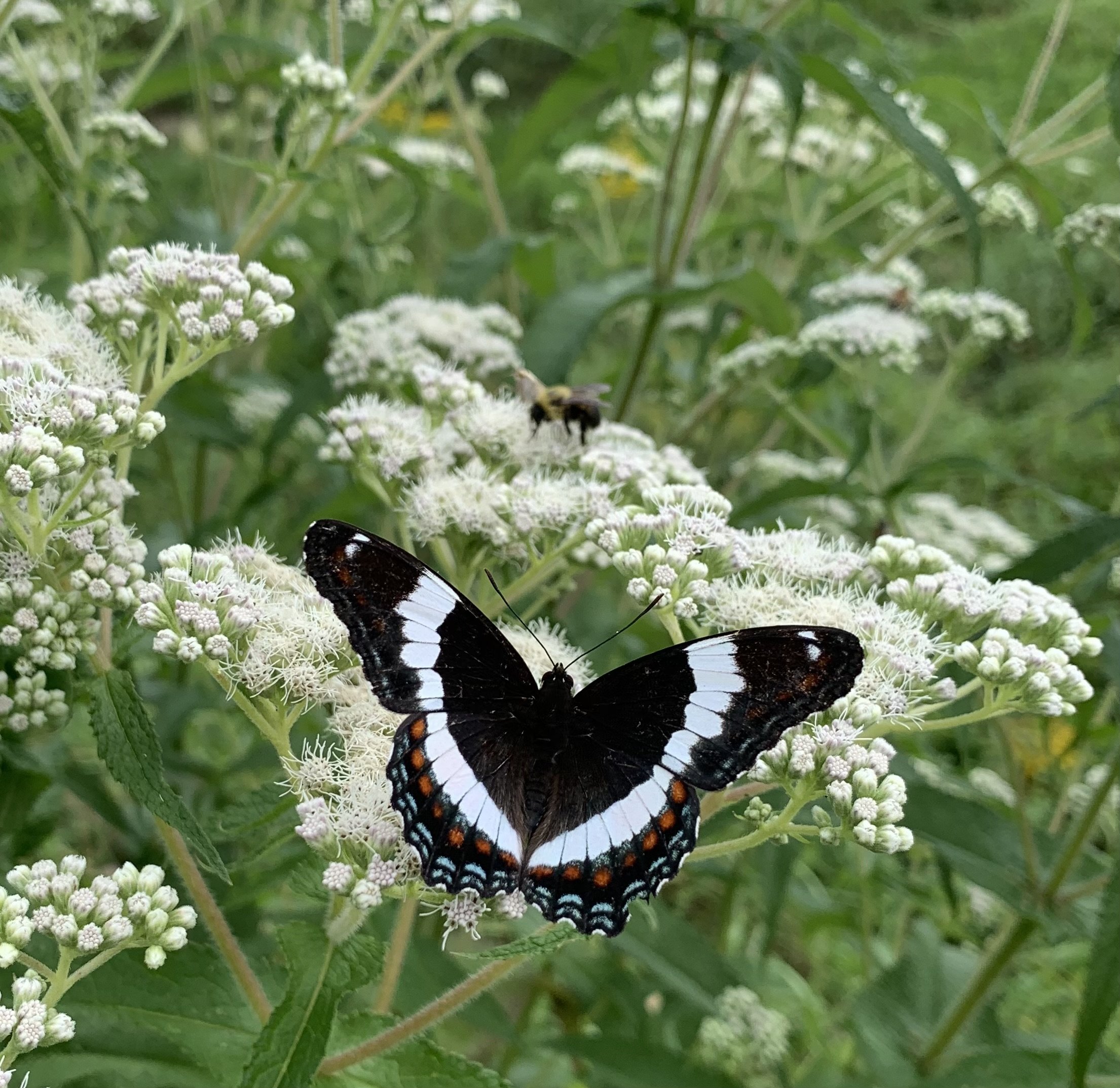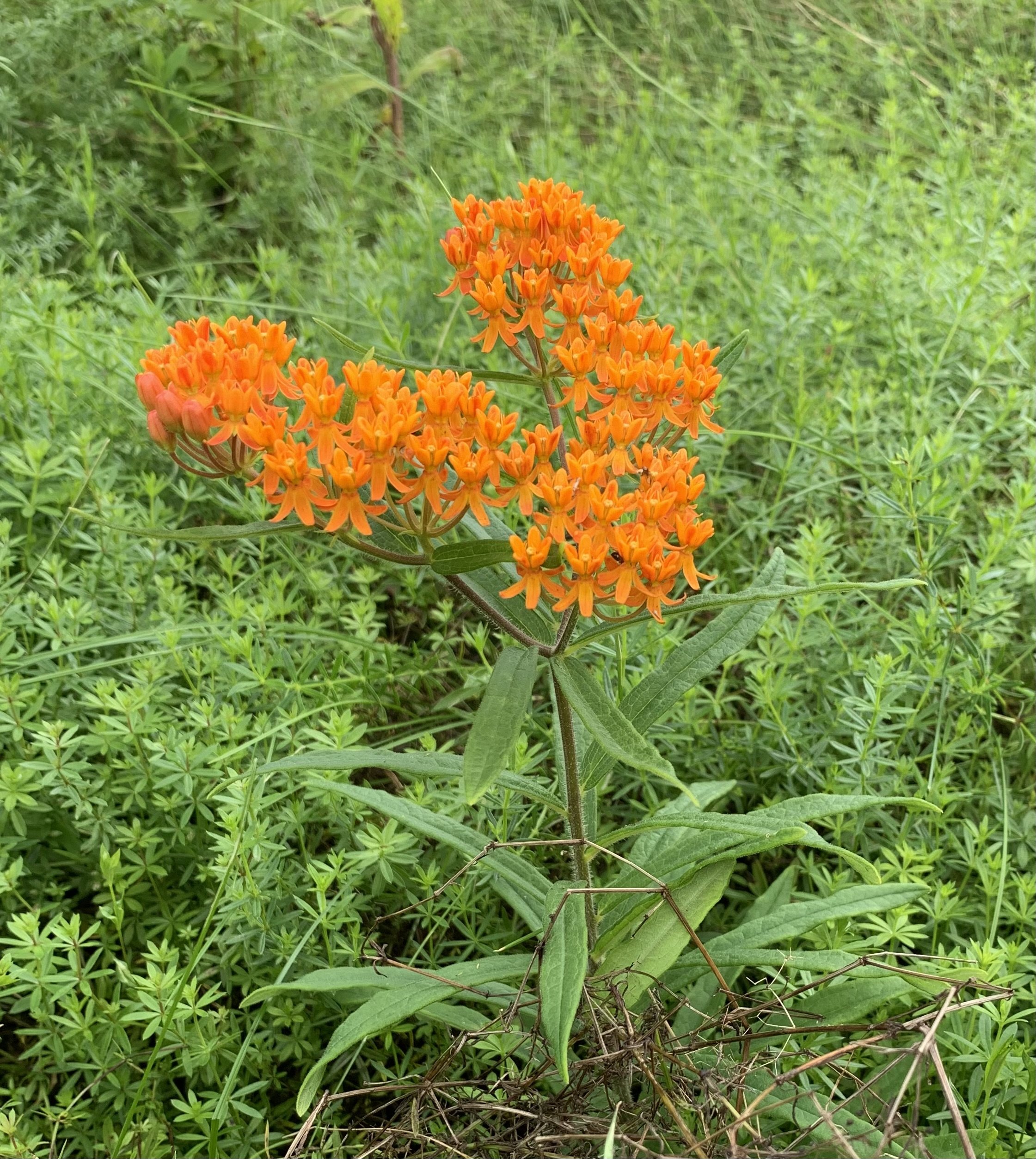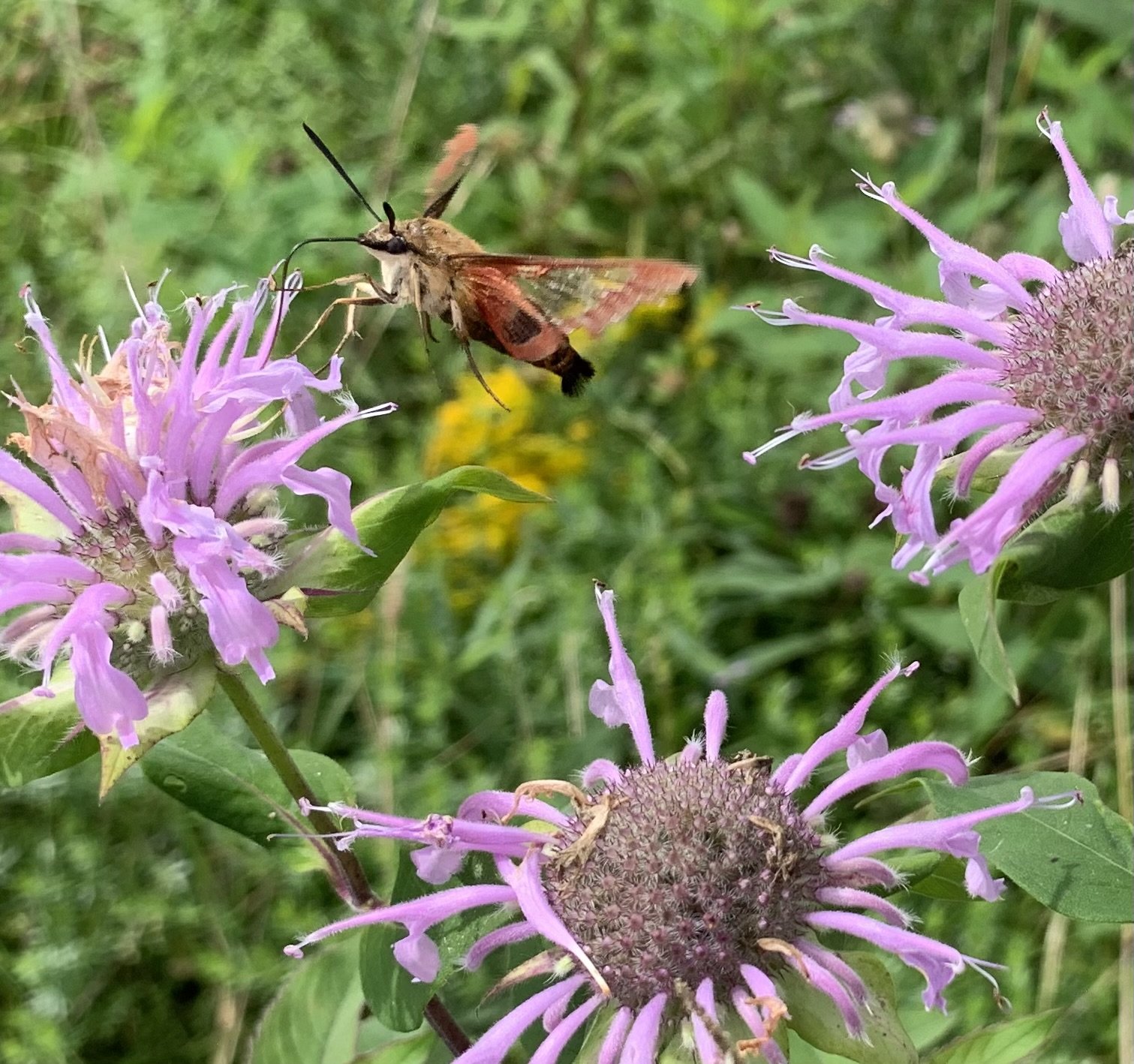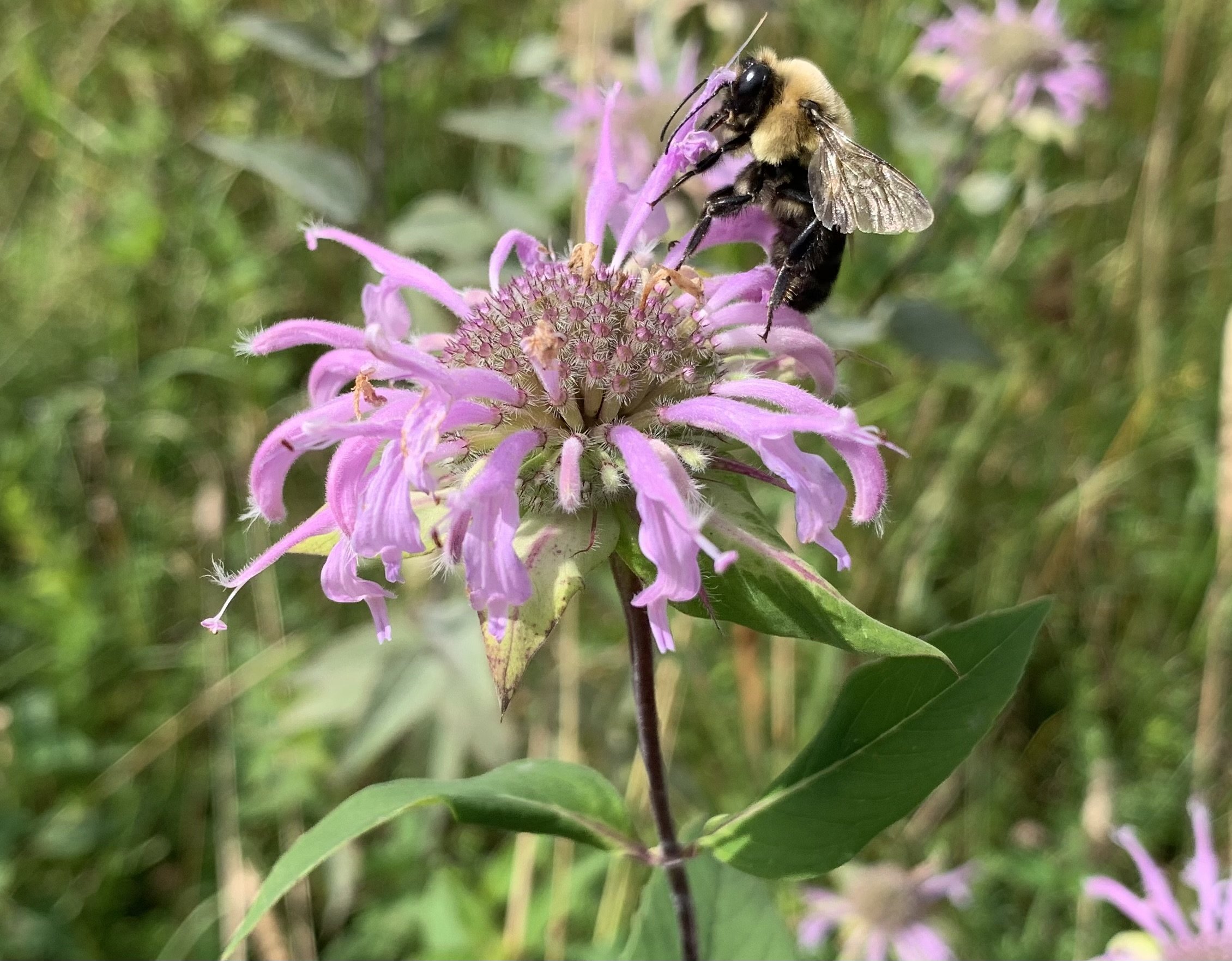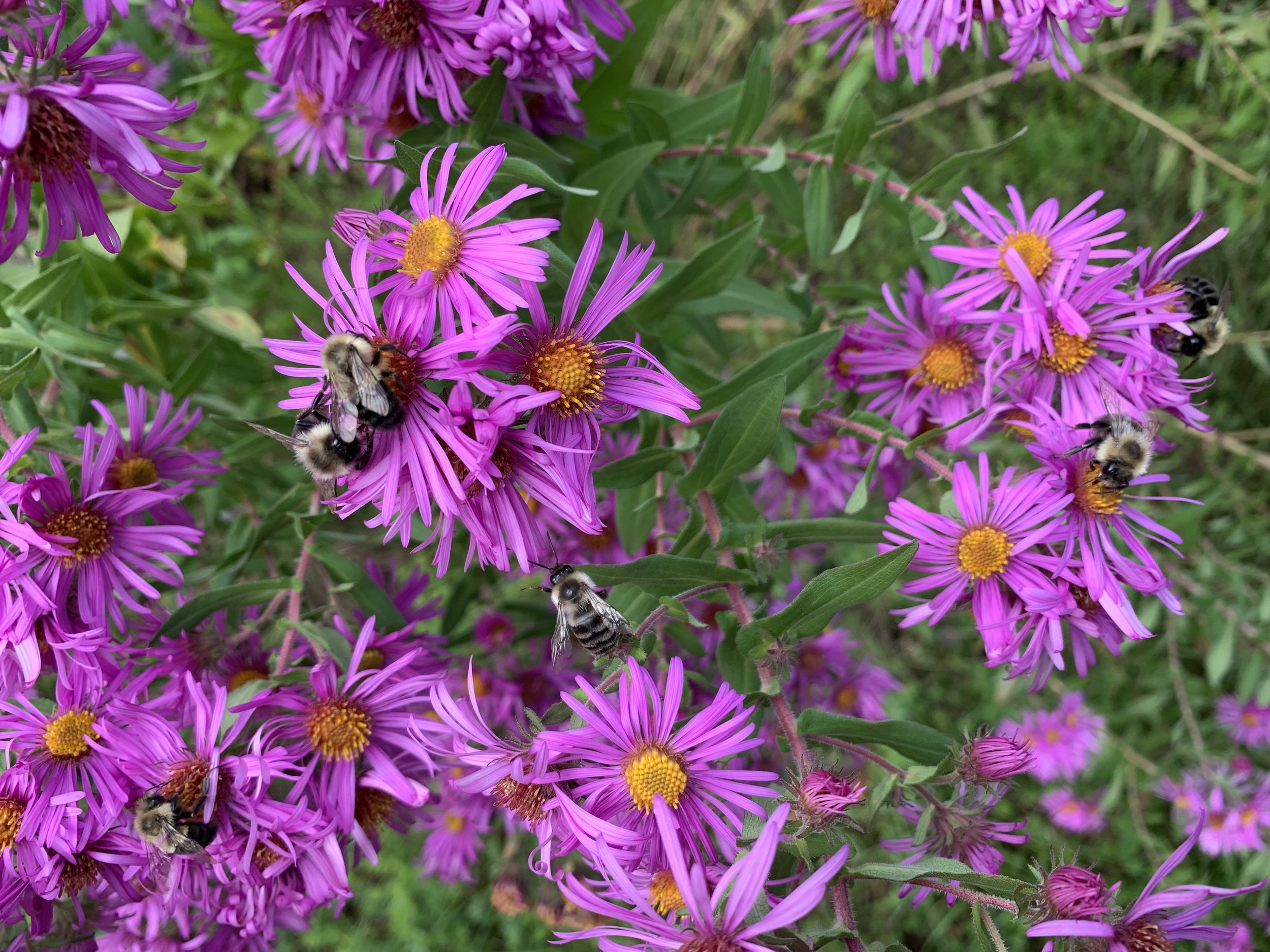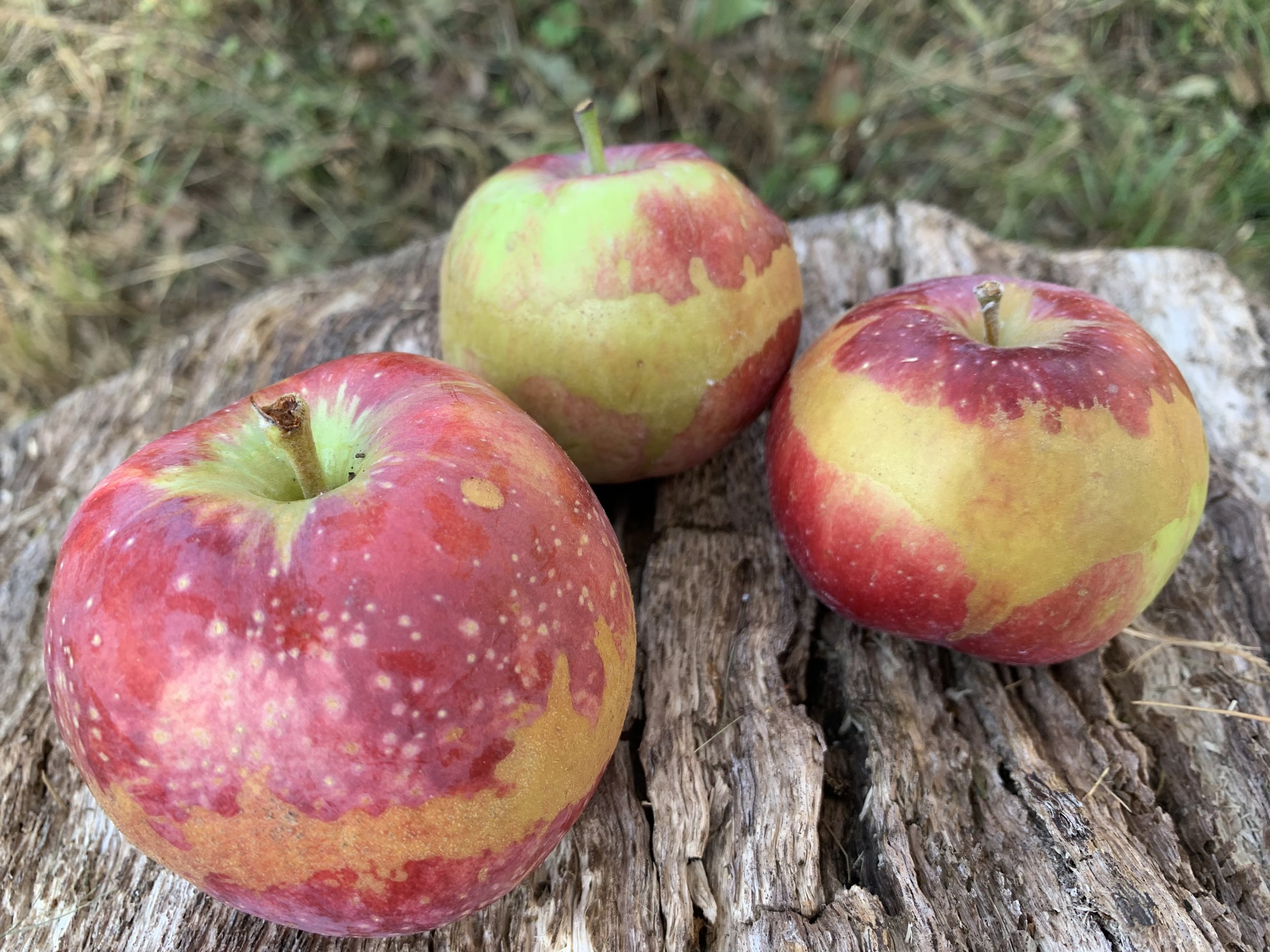There’s No Place Like Home
A few weeks ago a friend who lives in the mountains outside Durango, CO sent me several pictures of his apple crop. Well, you could hardly call it a crop since he only has two spindly trees, but those trees were laden down with huge apples. Turns out he purchased the trees in pots a year ago from a local nursery and planted them inside his garden fence. One year later, after no more effort on his part, voila, he had a bounty of blemish-free apples. I was stunned and strongly considering packing my shovel and heading west. Like most NE orchardists we spend the growing season weeding, thinning, amending the soil, and following the recommended organic practices in hopes that our heirloom trees will finally bear and that the weather, insects and diseases will work with us instead of against us.
Golden frost rings on the apples resulted from 22 degree temperatures on May 18th in the middle of the apple bloom..
This past spring we celebrated the disappearance of the browntail moth from our orchard and the spectacular bloom that appeared on our fruit trees around the 15th of May. Three days later, however, the temperature at Super Chilly Farm bottomed out at 22 degrees putting an end to our hopes of the best crop ever. We weren’t the only farm to feel the cold. Apple and pear crops were wiped out all over northern New England and in parts of upstate NY. But as the summer progressed, we began to notice that not all the tiny developing apples had dropped from the trees - a few were still holding on and growing. Some fruit had frost rings around them to give witness to the cold temperatures they had endured. Others looked as if they hadn’t been effected at all. We felt as if a miracle had occurred on the farm - it wouldn’t be a great crop, but we had apples.
And we had a few other things as well. We had water - perhaps more than we wanted at times - but the trees loved it. We had smoke-free skies thank to all that rain, and our forests weren’t burning. We had cool weather - not weeks over 110 degrees, and we could still be refreshed by a dip in a Maine lake or the ocean. What we didn’t have was tornadoes, hurricanes, mudslides and earthquakes. Could my apple-growing friend in CO claim all that bounty were he lived? Perhaps it is no wonder that the insects and porcupines that enjoy our apples want to live and eat in Maine.
It did seem like everyone I spoke with this summer, after they spent sometime complaining about too much rain, ended their rant by saying,”But I’m sure glad I live in Maine”. I’m glad I do too.
Picks of the week:
(Click each variety for more info)
While you’re busy harvesting your tomatoes, the apples are ripening. Apples that ripen from mid-August into the first week of September are considered to be summer apples. It’s surprising how many of them there are. You can spot them as you drive around, clustered along the roadsides or spread across neatly mowed lawns like yellow and red bocce balls. Every commercial orchard seems to have one or two varieties of summer apples, but many of them ripen before the farm stand opens for the season - and these fickle apples certainly don’t keep till it does. The old timers often planted an early ripening apple near their kitchen door so that they couldn’t fail to notice when it started to drop. They’d scoop the fruit up to make the first apple pie of the season. Perhaps they dried the rest or made them into sauce. Most of them probably went to fatten the pigs.
Summer apples are always a challenge for the CSA. We need to pick them quickly as soon as they’re ripe and do our best to keep them fresh and firm until the first delivery. We always hope to be able to give you a mixture of fresh eating and cooking apples as well as a few surprises. To help us accomplish our goal, you also have to do your part - don’t leave your bag of apples sitting around on your counter or in the back of your car for a few days. When you get them home, open the bags, taste the apples, cook with them. Dig in NOW. Here’s what you’ll find:
The three modern apples in your share, Redfree, Williams’ Pride and Zestar, come from university breeding programs. All of them were introduced in the last century, but in this century they have been overshadowed and pushed off the shelves by newer breeds of apples, all of whose names end with the word “Crisp”. Don’t be fooled - these three are crunchy and juicy and worthy of a bite. These are dessert apples so eat them fresh, but don’t be afraid to add them to a salad or salsa or even try them in the Recipe of the Week.
A late summer regular to the CSA is Duchess, a famous Russian apple that was long ago imported to and planted in The County and has never left. This apple tree loves Maine and cold weather. Since Duchess seedlings grow fairly true to type (meaning the trees grown from Duchess seeds are all similar to the original tree), there are forests of Duchess-like trees all over Aroostock County. Who was responsible for planting those forests? Bears. The Duchess apples in your share are from grafted trees that were planted by humans. Use these apples to bake your first pie of the year. This is an excellent cooking apple.
A newcomer to the CSA is Sweet Bough. These apples were grown at the Apple Farm in Fairfield, and until recently the owners, Steve and Marilyn Meyerhans, called the variety Early Pound Sweet. DNA analysis uncovered the real name - Sweet Bough, which is one of the oldest American varieties, originating somewhere on the east coast well before 1800. This is a true “sweet” variety, meaning that it has almost no acidity. Sweet apples taste strange to our 21st century palates, but old timers used them for molasses and to sooth stomach ailments. You won’t find this kind of sweet apple in the grocery store, but it is an important part of your apple education.
Trusty collies guarding the apples from the “Mixed Bag” - Sidrunkollane Talioun (left), Garden Royal (above right), and Trailman Crab (lower center)
Finally you’ll come to the last bag in your share and it’s a Mixed Bag for sure. Those of you who are new to the CSA are going to dump out the apples and scratch your heads. “Why did they send us only one or two of these scrappy looking apples? These don’t even look like something I’d want to eat.” Don’t be put off by the splotches and dings - these apples are really what the CSA is all about. Funky as they might look, these apples are a taste treat that you’re unlikely to find anywhere else. First up is the diminutive, yellow Trailman Crab that fairly glows on the tree when it is blushed with peachy orange. This Canadian introduction could find a place of honor in any penny candy store. We LOVE it, and we’re pretty sure you will too. Please try not to fight over it. Next in size is the green and red Garden Royal. This MA native originated in 1790 and is a standout for it’s flavor. Sadly it takes many years to bear and never gets very big, so understandably commercial orchardists have turned their backs on it. The CSA is the only place you’re going to get to try it. Like Trailman, this gem is meant for eating fresh. And the big green apple in the bag? That’s Sir Drunk-a-lot. Obviously not it’s real name, but it’s how we refer to this Estonian native. This is a firm, slightly tart apple that can be eaten fresh, or if you prefer, added to a pot of sauce. Why didn’t we give you more of each of these? That’s all we had.
Our apples come to you straight from the tree, so, as with all fresh produce, please be sure to wash them thoroughly before eating. Some of the apples are grown using Integrated Pest Management by the orchards we collaborate with throughout Maine, and some are organically grown here on Super Chilly Farm.
Recipe of the Week
Apple and Roquefort Strudel
I started out looking for a recipe that would highlight a sweet apple. I decided to look in a British cookbook called A Basket of Apples by Val Archer. It is full of lovely paintings of all sorts of unusual apples, many of which we never see here in the US. I was disappointed that none of them had “sweet” in their name but equally happy to find some new recipes to share in the newsletter. I chose this Strudel recipe simply because I had a salvaged a wedge of blue cheese from the buffet table at the end of a fundraiser and it was in my fridge waiting to be used. I made this with a Duchess apple, but I think it might be more interesting with a Redfree or a Williams’ Pride. While Duchess makes an excellent pie all on its own, it wasn’t flavorful enough to stand up to the strong cheese. I think the other two would add more complexity to the overall flavor. The other change I would make would be to make these as small triangles to serve as an appetizer. Cut the phyllo dough into 3x11” strips. Place a tablespoon of filling one inch from the end of a buttered strip and fold the end over to form a triangle. Wrap the triangle back and forth as you would if you were folding a flag. Keep the completed triangles covered with a towel til you are finished making them. Brush the triangles with butter, and bake at 350 degrees for 20-25 minutes til golden and crisp. Serve hot from the oven with a chilled glass of sparkling cider.
Ingredients:
Apple and Stilton Strudel. Watercolor by Val Archer from her book A Basket of Apples: Recipes and paintings from a country orchard.
1 lb apples, cored and cut in 1/2” dice
Juice of 1 lemon
1 tsp dried thyme
1/2 tsp ground nutmeg
8 oz Roquefort, Blue or Stilton cheese
3/4 cup chopped walnuts, toasted
freshly ground black pepper
1/2 cup unsalted butter, melted
3/4 cup dried breadcrumbs
4 large sheets of phyllo pastry
Directions:
Preheat oven to 375 degrees.
Put the diced apple in a medium-sized bowl; toss with the lemon juice, thyme and nutmeg.
Mix in walnuts and crumbled cheese. Season to taste.
Grease a large baking sheet. Unwrap the package of phyllo dough and lay a damp towel over it. Place one sheet on the baking sheet, brush with melted butter and sprinkle with one third of the bread crumbs. Repeat with the next two sheets of phyllo, laying them on top of the first sheet. Add the fourth sheet to the pile, brush with butter but don’t sprinkle with bread crumbs.
Spoon the filling along one end of the stack of phyllo dough, leaving about 2” on each side. Fold the side edges over the filling, and then roll up the phyllo to enclose the filling. Roll the strudel so the seam is down. Brush with melted butter.
Bake 30 minutes til the pastry is golden and the apples are tender.
Remove from the oven and brush with more butter. Allow to cool slightly before slicing and serving.
Recipe Revisited
Forever on the lookout for recipes that could benefit from an apple with no acidity, I decided to retry a recipe that I have included in a past newsletter and use the Sweet Bough apple. I chose the Josh McFadden recipe for Roasted Fennel & Apples because I thought a sweet apple might hold up well to 30 minutes in the oven and pair nicely with the anise taste of the fennel. I kept to the original recipe except that I tossed the apple with a tablespoon of lemon juice when I cut it up to keep it from turning brown and to add a bit of tartness to the dish. I could have added two tablespoons perhaps, but the Sweet Bough held its own in this dish - you could tell it was there, but the flavors merged together nicely. I’ll look for another Sweet Bough next time I make this.

